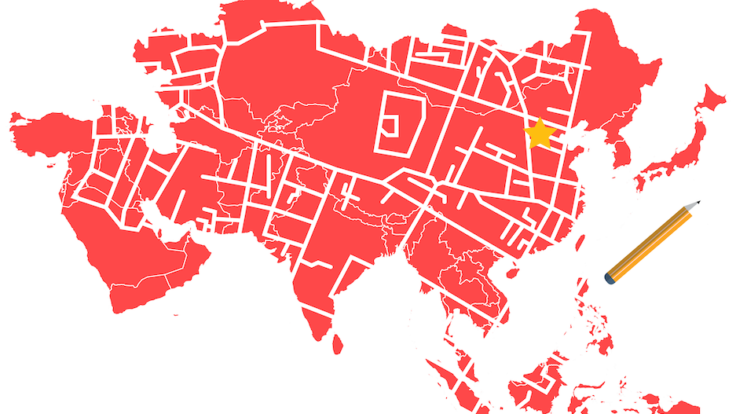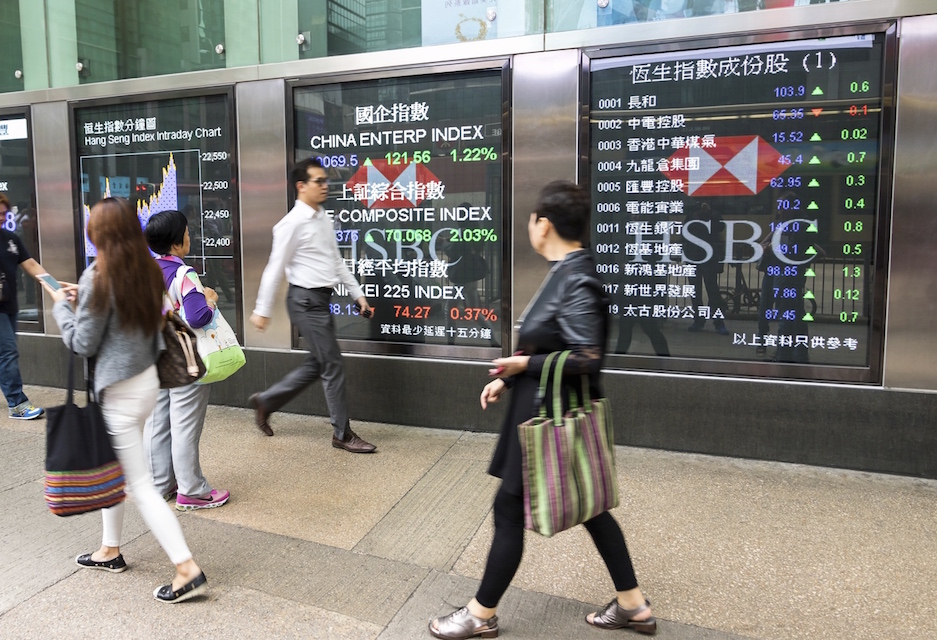China Seeks to Redraw the Global Trade Map
Don’t Forget About Belt and Road
It’s a busy time for trade news. Headlines report every twist in the U.S.-China trade war, Brexit nears another deadline, and the U.S.-Mexico-Canada Agreement (USMCA) only just passed in Congress after a year of domestic debate. In Asia, countries are negotiating “mega” trade deals like the Regional Comprehensive Economic Partnership (RCEP) and the China-Japan-South Korea deal, while the United States is favoring “mini” or partial deals like the initial U.S.-Japan Free Trade Agreement. The WTO’s dispute settlement mechanism is stalling out without a functioning appellate body. The list of negotiations goes on.
All the while, China moves forward with its ambitious hard infrastructure plan to connect continents through its Belt and Road Initiative. The results will have a serious long-term impact on global trade. Policymakers are working to get their arms around its implications. Here are the basics everyone should know.
What is the Belt and Road Initiative?
Announced by Chinese President Xi Jinping in 2013, China’s Belt and Road Initiative is made up of two parts: The Silk Road Economic Belt (a “belt” by land) and the 21st Century Maritime Silk Road (a “road” by sea). Inspired by the historic trade routes forged between Asia and Europe and that once bustled with traders swapping silk, spices, tea, paper, and gunpowder, China is driving a state-planned version around its own vision of China-centered global trade.
The project has gone by many names: Launched as “One Belt, One Road” (OBOR), it’s now referred to as the “Belt and Road Initiative” (BRI). The plan redraws and expands China’s modern land and sea routes through new roads, railways, ports, bridges, power plants and more.
BRI spans some 138 countries, collectively home to 4.6 billion people and $29 trillion in combined GDP, an area the Chinese have loosely divided into six corridors. The biggest is the China-Pakistan Economic Corridor (CPEC), where China has spent an estimated $68 billion to date.
According to the American Enterprise Institute, Pakistan has received the most Chinese construction funds ($31.9 billion) along the BRI so far, followed by Nigeria and Bangladesh, but China is also investing heavily in more developed economies like Singapore ($24.3 billion), Malaysia and Russia. Construction projects have focused mostly on the power, transport and property sectors.
$1 Trillion Price Tag
The World Bank estimates investment in BRI totals $575 billion so far. Firms like PWC and Morgan Stanley estimate the final cost at around $1 trillion over the next 10 years. To put that number in perspective, the U.S. spent just $13.2 billion ($135 billion in today’s dollars) to help rebuild western Europe after World War II under the 1948 Marshall Plan.
The $1 trillion price tag is just a drop in the bucket compared to the overall infrastructure needs of the region. The Asian Development Bank estimates that Developing Asia will need to invest $1.7 trillion a year in infrastructure to maintain its growth, respond to climate change and eradicate poverty. This adds up to over $26 trillion in total investment needed by 2030.
Many participating BRI economies are in desperate need of infrastructure to expand trade. Trade in BRI corridor economies is 30 percent below its potential, and FDI is 70 percent below potential, according to a recent World Bank report. The BRI has the potential to increase trade, encourage foreign investment and reduce poverty by lowering trade costs. If fully implemented, the World Bank says it could end up increasing global trade between 1.7 and 6.2 percent. But improvements need to be implemented to make this a reality.
Opportunity Costs
For BRI to live up to its potential, the World Bank says China and participating countries must work to deepen policy reforms like increasing transparency, improving debt sustainability, and mitigating environmental, social and corruption risks along the belt and road.
Large infrastructure projects are notoriously difficult to execute. But risks are heightened along the BRI, where limited transparency along with weak economic fundamentals and governance make debt sustainability a real concern. The World Bank estimates 12 of the 43 BRI corridor economies are at risk for deterioration in their debt sustainability outlooks.
China has been criticized for using “debt-trap diplomacy” along the BRI to take advantage of developing countries unable to repay large debts. One frequently cited example is Sri Lanka’s Hambantota Port, which was handed over to a Chinese state-owned company in 2017 after the Sri Lankan government was unable to pay its bill for the Chinese-built port. China now holds a 99-year lease on the strategic port.
Some countries have been able to successfully renegotiate their BRI debt with Chinese banks. Malaysia recently refinanced its East Coast Rail Link project from over $15 billion to $10.7 billion after Malaysian Prime Minister Mahathir Mohamad initially cancelled $22 billion worth of BRI projects. Myanmar scaled back a major port project from $7.3 billion to $1.3 billion in 2018.
In a study of 40 cases of China’s external debt renegotiations with 28 different countries, research firm Rhodium Group found that asset seizures were rare and debt renegotiations in the form of write-offs, deferral and refinancing were far more common.
Rebranding the Belt and Road
Facing growing criticism abroad, BRI leaders announced at the second major BRI forum held in Beijing in April 2019 that the project would be getting a facelift. The joint statement says BRI investments would focus on “high-quality” cooperation, green development, and debt sustainability moving forward.
China’s Ministry of Finance also released a debt sustainability framework (DSF) for the BRI. The Chinese DSF closely mirrors the World Bank-IMF DSF, which has been used for over 20 years as a framework to guide countries and investors on how best to finance development needs while avoiding potential build up of excessive debt. The World Bank-IMF DSF requires regular debt sustainability analyses (DSAs) measuring a country’s projected debt burden, vulnerability to economic and policy shocks, and assessing the risk of debt distress.
While the introduction of the Chinese DSF is a welcome step toward improving debt sustainability along the BRI, there are still outstanding questions about how China will actually implement it. For example, Chinese officials have not yet indicated whether the DSF will be binding, or how transparent the DSF process will be.
All Roads Lead Back to Beijing
There’s plenty of trade news to vying for our attention nowadays. But China’s Belt and Road Initiative should not get lost in the shuffle. Beyond building roads and bridges in developing countries, the BRI also has serious implications for trade in areas like 5G technology, arctic trade and even space travel.
The U.S. response to the BRI has varied. The Obama administration followed a “Pivot to Asia” approach, negotiating the Trans-Pacific Partnership (TPP), a mega-trade deal excluding China. President Trump scrapped the TPP days after coming to office. His administration has since passed the BUILD Act which authorizes the U.S. government to invest up to $60 billion in developing countries across Asia and Africa.
But the United States’ muted response may be too little too late. With every new BRI project, China is physically laying the groundwork for new trade routes across the region. If successful, BRI means all roads will lead back to Beijing.





